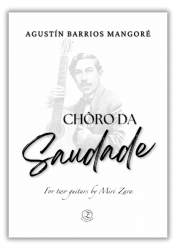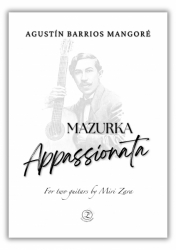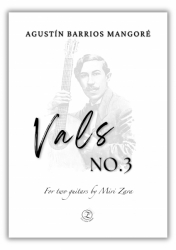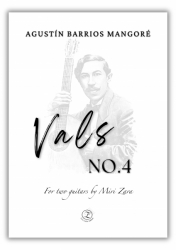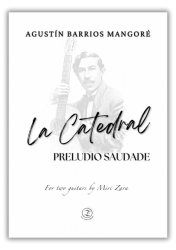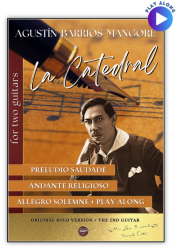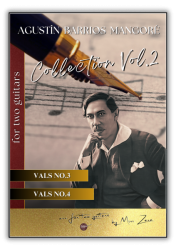
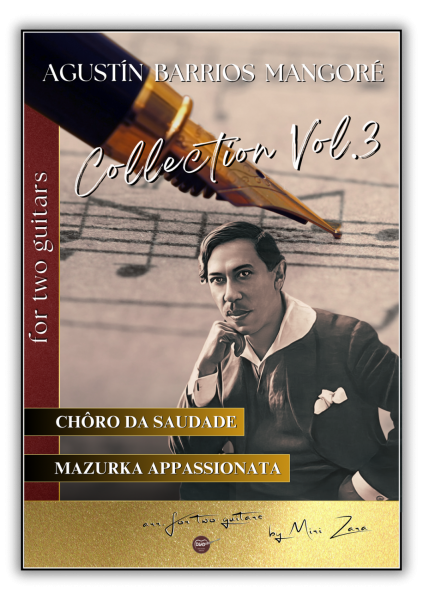
Agustín Barrios Mangoré - Collection Vol.3
| Type of Music Notation: | Standard |
| Format: | |
| Number of pages or Backing tracks: | 37 |
Browse all pages in unique Flip-book preview with audio
Agustín Barrios Mangoré (May 5, 1885 - August 7, 1944) was a Paraguayan virtuoso classical guitarist and composer, largely regarded as one of the greatest performers and most prolific composers for the guitar. Over 300 of Barrios' compositions and arrangements survive. He is still revered in Latin America to this day, where he is seen as one of the greatest musicians of all time by many. Joh Williams, former student of Andres Segovia, said of Barrios: "As a guitarist/composer, Barrios is the best of the lot, regardless of era. His music is better formed, it's more poetic, it's more everything! And it's more of all those things in a timeless way."
“Chôro da Saudade” first appeared in a concert that Barrios organized on November 28, 1929 at the Municipal Theater of Rio de Janeiro. One version states that this composition was written in Sao Paulo in 1929 in memory of a good friend's son who died tragically. But there is another version of the story. According to the original manuscripts and surviving concert programs, it is possible that this composition already existed before 1929 under the name "Aire Brasileiro", which Barrios first performed in 1925 in Montevideo. Or like the “Chôro Brasileiro” he performed a few months earlier in Pelotas. However, the title “Chôro da Saudade” is first encountered in 1929 and a handwritten copy is dedicated to a good friend as an expression of shared grief over the loss of a beloved son. Regardless of history or meaning, this is Barrios at his best.
Mazurka Appassionata by Barrios was originally composed for solo guitar. In 2021 I arranged it for 2 guitars. The melody alternates in both parts to create a kind of "passionate" conversation between the guitars. In one guitar, the melody can be played on the 2nd or even the 3rd string, resulting in better cantilena, more beautiful vibrato and more aliquot notes. On the other hand, the accompaniment allows fuller harmony, thickened chords, or possible doubling of the melody in octaves.

.jpeg)




